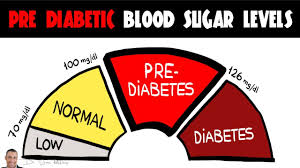Are you Diabetic? Is your pancreas failing to do its job? Do you think you are helping your body out by consuming a sweetener that is made from sugar but is not absorbed like sugar? Are you feeling splendid about the NEW chemical sweetener SPLENDA! You might not after reading these findings.
There is no question that sucralose or splenda starts off as a sugar molecule, however, sucralose is a synthetic chemical that was originally cooked up in a laboratory. In the five step patented process of making sucralose, three chlorine molecules are added to a sucrose or sugar molecule. The chemical process to make sucralose alters the chemical composition of the sugar converting it to a fructo-galactose molecule. This type of sugar molecule does not occur in nature and therefore your body does not possess the ability to properly metabolize it.
Sounds exciting…! Your body doesn’t recognize it as a calorie. NO weight gain, NO blood sugar increase. Hold on, what does your body do with it?
Dr. Jim Bowen reported that chlorocarbons and sucralose are significantly absorbed from the digestive tract. If you look at the research primarily from animal studies, you will see that in fact 15% of sucralose is absorbed into the digestive system and ultimately stored in the body. To reach a number such as 15% means some digestive systems absorb more and some absorb less. In one human study, one of the eight participants did not excrete any sucralose even after 3 days. Clearly his body was absorbing this chemical.
What happens when sucralose, a chlorocarbon, known for causing organ, genetic and reproductive damages is consumed at even less than FDA demanded test levels? An astonishing 40% shrinkage of the thymus gland, the master immune system gland as well as, swelling of the liver and kidneys, and calcification of the kidneys.
It is coming up to the cold and flu season again. Are you someone who tends to catch everything coming around? Do you notice your throat hurting or feeling raw? How much artificial sweetener splenda do you consume?
There must be more to this.
Four sweeteners (sodium cyclamate, saccharin, sodium saccharin, and sucralose) also induced DNA damage in gastrointestinal organs. Based on these results, we believe that more extensive assessment of food additives in current use is warranted.
As of 2005, only six human trials have been conducted on Splenda (sucralose). Of these six trials, only two of the trials were completed and published before the FDA approved sucralose for human consumption. The two published trials had a grand total of 36 total human subjects and only 23 of these people were actually given sucralose. There have been no long-term human toxicity studies published until after the FDA approved sucralose for human consumption. Following FDA approval a human toxicity trial was conducted, but lasted only three months, hardly the length of time most Splenda users plan to consume sucralose. No studies have ever been done on children or pregnant women.
If you look at the research (which is primarily extrapolated form animal studies) you will see that in fact 15% of sucralose is absorbed into your digestive system and ultimately is stored in your body. To reach a number such as 15% means some people absorb more and some people absorb less. In one human study, one of the eight participants did not excrete any sucralose even after 3 days. Clearly his body was absorbing and metabolizing this chemical. That is what our bodies are supposed to do.
Nutritionals makes it’s claim that Splenda is not digested or metabolized by the body, making it have zero calories.
Is Splenda Really As Safe As They Claim It to Be?
As of 2005, only six human trials have been conducted on Splenda (sucralose). Of these six trials, only two of the trials were completed and published before the FDA approved sucralose for human consumption. The two published trials had a grand total of 36 total human subjects. 36 people sure doesn’t sound like many, but wait, it gets worse, only 23 total were actually given sucralose for testing and here is the real killer:
The longest trial at this time had lasted only four days and looked at sucralose in relation to tooth decay, not human tolerance.
Why Do You Need to Know About Splenda?
Splenda, best known for its marketing logo, “made from sugar so it tastes like sugar,’ has taken the sweetener industry by storm. Splenda has become the nations number one selling artificial sweetener in a very short period of time.
Between 2000 and 2004, the percentage of US households using Splenda products jumped from 3 to 20 percent. In a one year period, Splenda sales topped $177 million compared with $62 million spent on aspartame-based Equal and $52 million on saccharin-based Sweet ‘N Low.
McNeil Nutritionals, in their marketing pitch for Splenda emphasizes that Splenda has endured some of the most rigorous testing to date for any food additive. Enough so to convince the average consumer that it is in fact safe. They claim that over 100 studies have been conducted on Splenda. What they don’t tell you is that most of the studies are on animals.
Additional Concerns About Splenda Studies There have been no long-term human toxicity studies published until after the FDA approved sucralose for human consumption. Following FDA approval a human toxicity trial was conducted, but lasted only three months, hardly the length of time most Splenda users plan to consume sucralose. No studies have ever been done on children or pregnant women.
Much of the controversy surrounding Splenda does not focus just on its safety, but rather on its false advertising claims. The competition among sweeteners is anything but sweet. The sugar industry is currently suing McNeil Nutritionals for implying that Splenda is a natural form of sugar with no calories.





